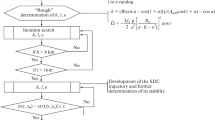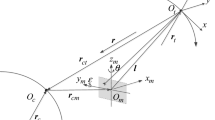Abstract
The article proposes a system for removing space debris from the geostationary orbit (GEO). The system is based on advanced space solutions and rational scheme of collecting space debris by reusable automatic long-use space vehicles. Creation of such a system will probably encourage a number of innovative space technologies such as reactive motion with high specific impulse, interorbital transfers and space cargo transportation, automatic control and complex operations performed by automated systems.
Similar content being viewed by others
References
Veniaminov, S.S. and Chervonov, A.M., Kosmicheskii musor-ugroza chelovechestvu (Space Debris: Threat to Humanity), Moscow: Institute of Space Research of Russian Academy of Sciences, 2012.
Kessler, D.J., Collisional Cascading: the Limits of Population Growth in Low Earth Orbits, Advances in Space Research, 1991, vol. 11, pp. 2137–2146.
Interfax, 17.04.2013.
Author information
Authors and Affiliations
Additional information
Published in Giroskopiya i Navigatsiya, 2013, No. 3, pp. 155–161.
Rights and permissions
About this article
Cite this article
Branets, V.N. Navigation and motion control in space debris removal. Gyroscopy Navig. 5, 54–57 (2014). https://doi.org/10.1134/S2075108714010040
Received:
Published:
Issue Date:
DOI: https://doi.org/10.1134/S2075108714010040




